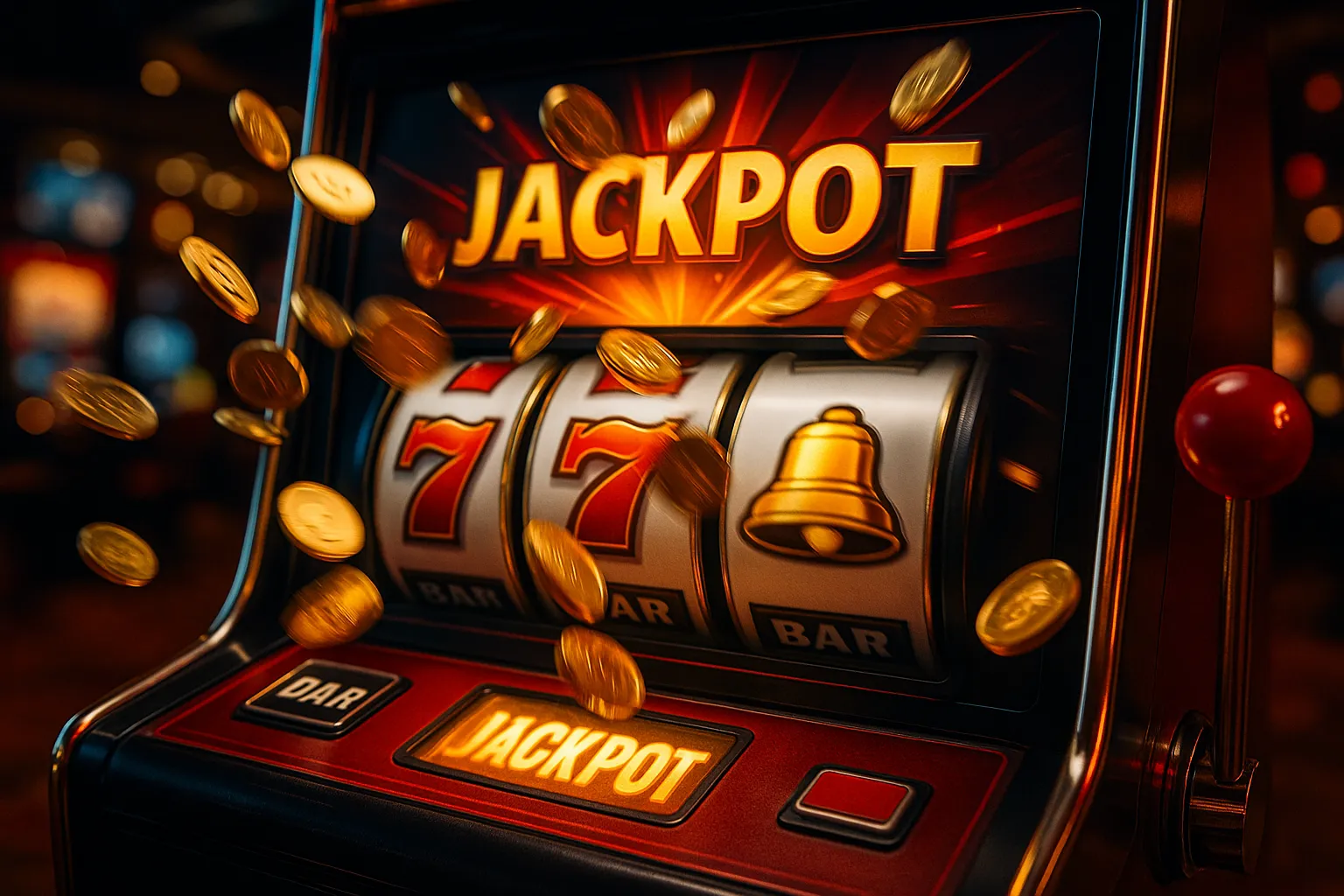I’ll never forget the first time I hit a sizable payout on a classic three-reel slot. The symbols aligned—three cherries in a row—and suddenly the machine came alive. The reels trembled, lights flashed in pulsating rhythms, and a cascade of coins rattled across the tray. That visceral thrill wasn’t just showmanship; there’s real engineering and psychology behind that celebratory shake. In this article, I’ll pull back the curtain on why slot reels vibrate after big wins, explore the technical mechanics, and share insights on how this ties into player engagement and even affects player choices at Fastest Payout Casino Sites. Along the way, I’ll draw parallels with themed experiences—think swinging vines at Rainforest Cafe—to illustrate how sensory feedback keeps us coming back for more.
The Mechanics Behind Reels’ Post-Win Vibration
At its core, a modern slot machine combines digital programming with carefully calibrated physical components. When a significant win triggers, the internal gaming system sends a command to vibration motors strategically placed behind the reels. These tiny motors—similar to the ones that make your smartphone buzz—generate the trembling effect. In land-based machines, additional actuators can tilt the reels or vibrate the cabinet for more dramatic flair. The frequency and intensity of these vibrations are often programmed to correlate with the win size: larger payouts produce stronger, longer shakes.
These actuators don’t just serve for spectacle. Technicians can fine-tune calibration so that the vibration remains within safety limits, preventing wear on mechanical parts while still delivering that satisfying jolt. Behind the scenes, game developers collaborate with hardware engineers to synchronize reel motion with lights and audio cues—resulting in the seamless, multisensory jackpot celebration you experience on the casino floor.
The Psychology of Physical Feedback
Humans are wired to respond to immediate, tactile stimuli. That’s why smartphone notifications trigger an almost Pavlovian reaction: the vibration prompts you to check your screen. Similarly, slot machines leverage this principle. When reels shake after a win, players feel rewarded not only financially but physically. That brief jolt hits the limbic system, releasing a small burst of dopamine. It’s this rush that makes you lean in, smile, or even let out an ecstatic shout—behavior that both enhances your enjoyment and subconsciously reinforces the game’s appeal.
In my early days as a casual slot enthusiast, I found myself drawn to machines with more pronounced vibrations and louder chimes. Over time, I realized those sensory triggers made small wins feel disproportionately exciting, encouraging me to spin “just one more time.” Recognizing this gave me better control: I started choosing games with milder feedback when I wanted a lower-intensity experience, and saved the high-payout, high-vibration slots for moments I wanted a real adrenaline kick.
The Role of Sound and Light in Amplifying Reels’ Shake
Vibration rarely stands alone. Big-win sequences typically pair shaking reels with flashing lights and triumphant music. This triad—touch, sight, and sound—works in unison to maximize impact. Auditory cues often build anticipation, crescendoing just as the reels finish their spin. Then, lights strobe in vibrant patterns while the machine dispenses coins or triggers a virtual coin cascade animation. The sensory overload extends the thrill of a win, making it more memorable.
This holistic approach mirrors themed dining experiences—something I was reminded of during a visit to Rainforest Cafe. There, periodic “storm events” flood the room with sound, lights, and artificial rain, immersing guests in an unforgettable moment. Casinos use a similar philosophy: by engaging multiple senses simultaneously, they create emotional peaks that heighten enjoyment and carve lasting memories.
How Vibration Affects Game Design and Player Choice
Game developers don’t apply reel-shaking equally across all titles. Instead, they strategically incorporate vibration intensity into a game’s design profile. Low-volatility slots, which pay smaller wins more frequently, often feature gentle vibrations—enough to offer positive reinforcement without overwhelming new players. High-volatility slots, which deliver rarer but larger payouts, sport robust shaking sequences to mark those big hits. This differentiation helps players self-select games that suit their risk preferences: thrill-seekers gravitate toward heavy-hitters with intense feedback, while cautious players stick to milder titles.
As a blogger who’s tried dozens of slots, I’ve noticed that machines with more pronounced vibration often attract longer play sessions. There’s just something about the tactile jolt that says, “Yes, that was real!” It bridges the gap between virtual odds and tangible reality, making digital wins feel as gratifying as coins hitting a tray.
The Connection to Fastest Payout Casino Sites
While physical slot machines captivate with reels’ shake, online casinos have recreated similar feedback through haptic-enabled controllers and mobile vibrations. Many of today’s premium operators—especially the Fastest Payout Casino Sites—opt to support controller vibration on dedicated apps. When you score a bonus round or hit a jackpot, compatible devices deliver subtle pulses. This fosters an immersive environment, even when playing from home.
Interestingly, sites offering the speediest payouts tend to invest more in these advanced features. They recognize that prompt payout processing and rich user experience go hand in hand. I remember testing a popular rapid-payout site last year; their app’s haptic feedback on mobile completed the emotional arc—win, feel it, then see funds in my account within minutes. That seamless trifecta of sensory and transactional gratification left a lasting positive impression.
Engineering Considerations for Cabinet Vibration
Designing durable, safe vibrator systems requires a delicate balance. Technicians must consider:
Motor Placement: Motors are strategically positioned to avoid stress points on the cabinet or reel assembly.
Amplitude Control: Excessive vibration can loosen screws or damage electronics. Amplitude is often capped to safe levels.
Energy Efficiency: Vibration motors draw power; games optimize timing so motors run briefly but effectively.
Maintenance Protocols: Casinos schedule routine checks to ensure actuators remain secure and calibrated correctly.
During a behind-the-scenes tour of a Vegas workshop, I saw how engineers use vibration sensors to measure actual cabinet shake. They simulate big-win sequences, gather data on motor wear, and adjust firmware for optimal performance. This rigorous testing ensures that every tremor you feel on the floor is both thrilling and mechanically sustainable.
Real-World Examples of Memorable Reel Shakes
One of my standout moments happened at a friendly local casino when a visiting high-roller hit a multi-line video slot jackpot. The machine’s vibration was so intense that nearby players swore the entire bank of machines trembled. Witnessing that spectacle in person emphasized how communal slots excitement can become—players gathered, cheered, and snapped phones to capture the moment.
Similarly, at an online operator that offers controller haptic support, I experienced a minor technical hiccup: the vibration persisted slightly after the winning animation ended. Although brief, it underlined how fine-tuning is crucial. Thankfully, the development team rolled out a quick app update to rectify the timing—an example of iterative improvements based on player feedback.
Balancing Thrill and Responsible Play
While reels’ vibration amplifies joy, it can also fuel impulsive behavior. Casinos employ responsible-gambling measures—such as session timers and deposit limits—to help players maintain control. Some operators allow you to disable haptic feedback entirely if you find it too stimulating. Personally, I toggle off vibration on high-volatility slots after a few big wins, so I don’t chase the sensory high.
Embracing psychological insight and engineering innovation, the industry continues to evolve. Next-generation machines are exploring dynamic vibration patterns, syncing with augmented-reality overlays for even richer experiences. Still, the core principle remains: tactile feedback transforms abstract odds into a tangible thrill that players crave.
Conclusion
Slot reels shake after prosperous spins thanks to a careful blend of mechanical design, psychological strategy, and immersive showmanship. Vibration motors, synchronized audio-visual cues, and engineered cabinet movements unite to create a multisensory jackpot moment. Whether you’re chasing big wins on a land-based machine or using haptic-enabled apps at Fastest Payout Casino Sites, that satisfying tremor bridges digital gameplay and real-world gratification. As you spin next time, take a moment to appreciate the precision behind each shake—and enjoy the rush responsibly.




